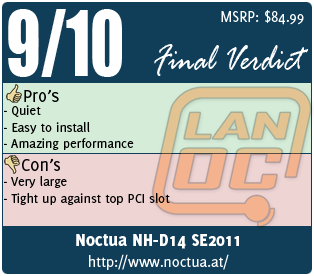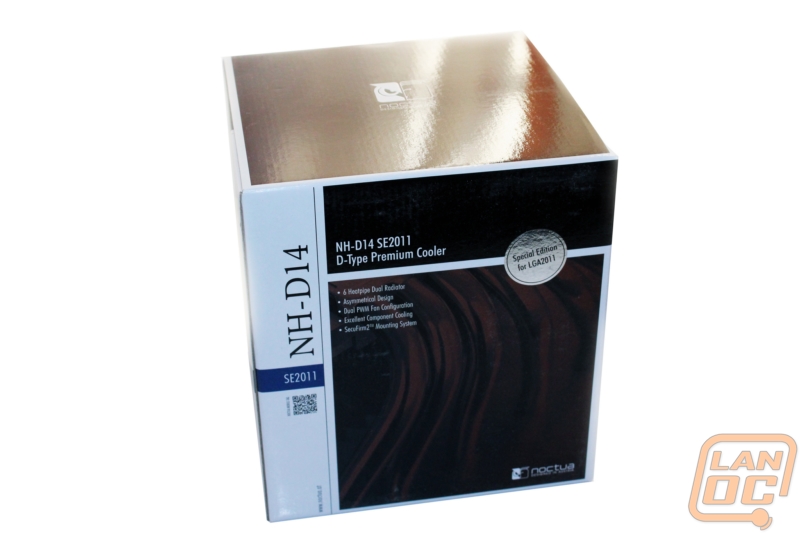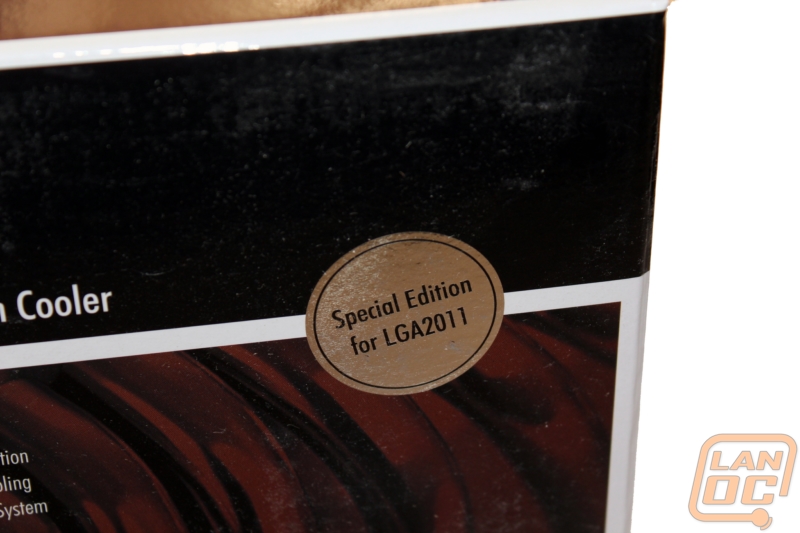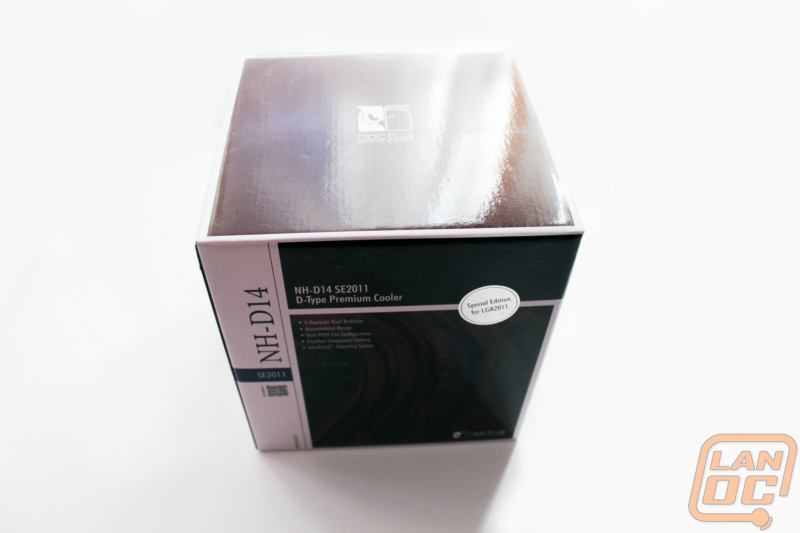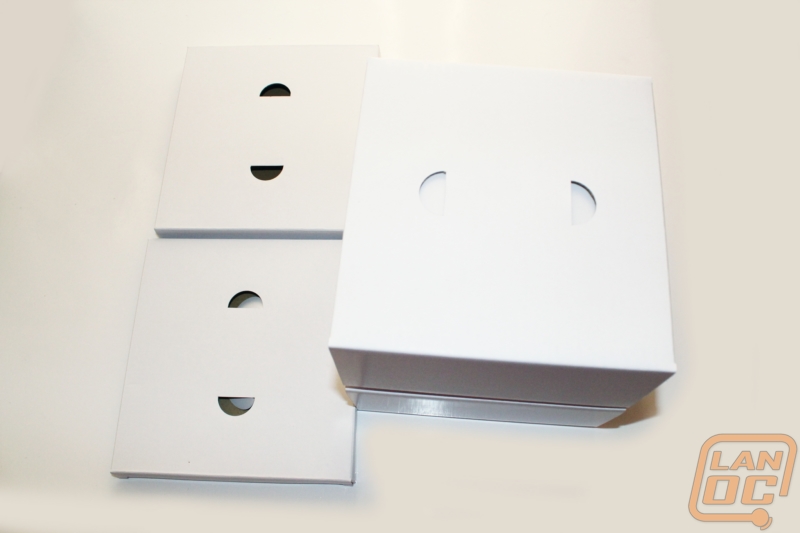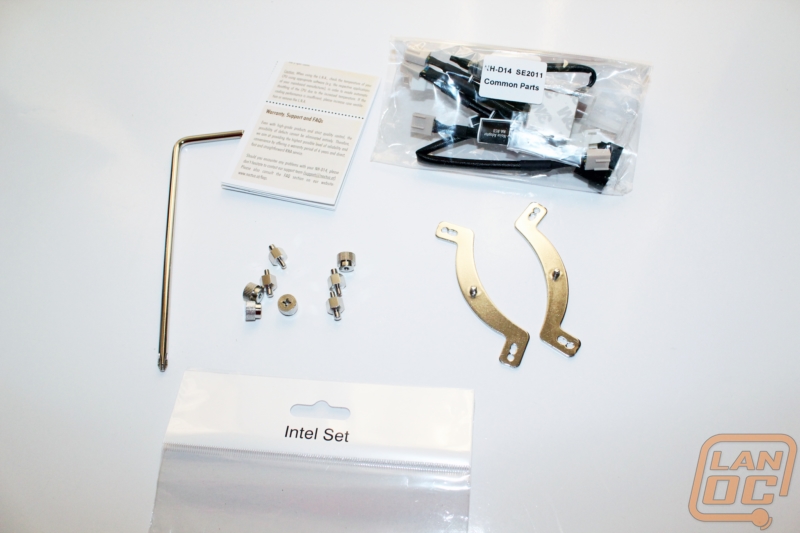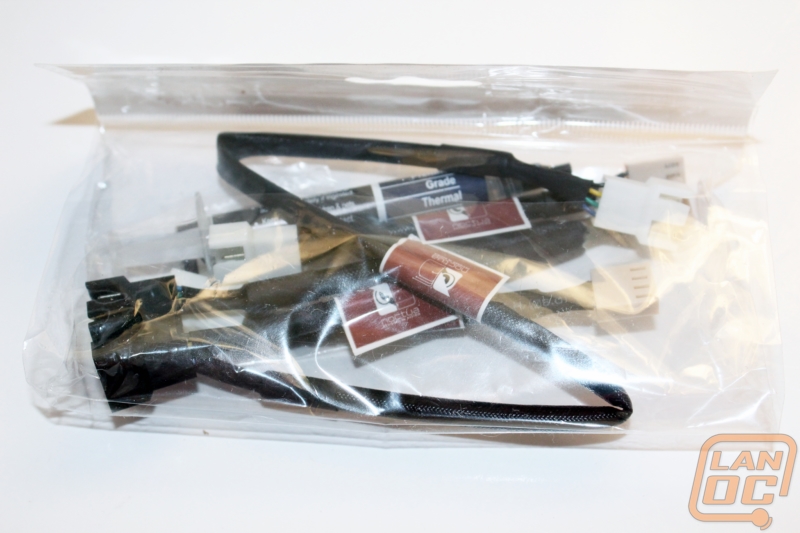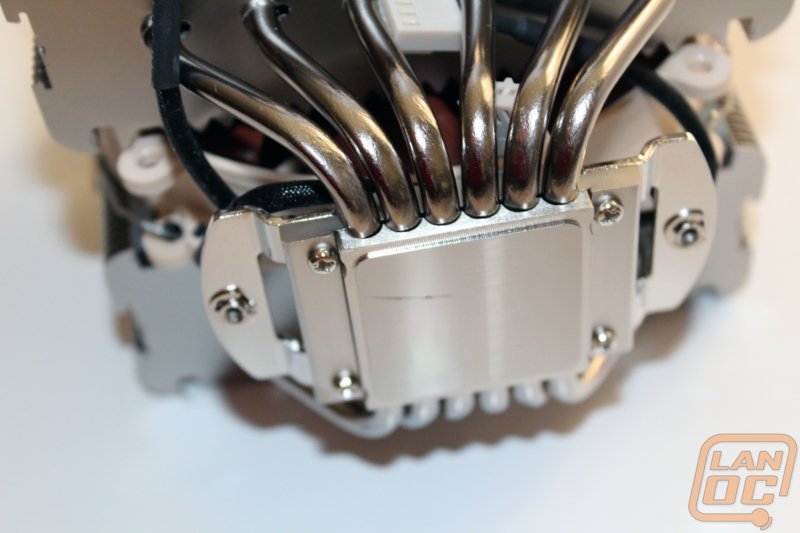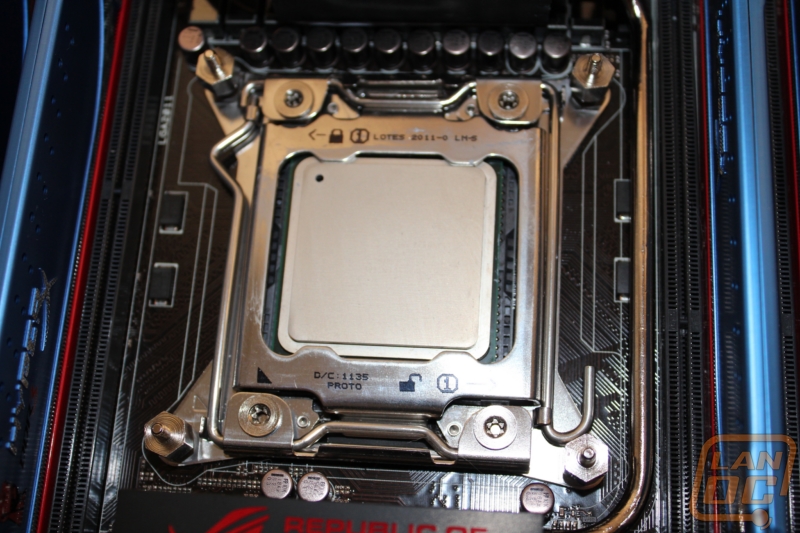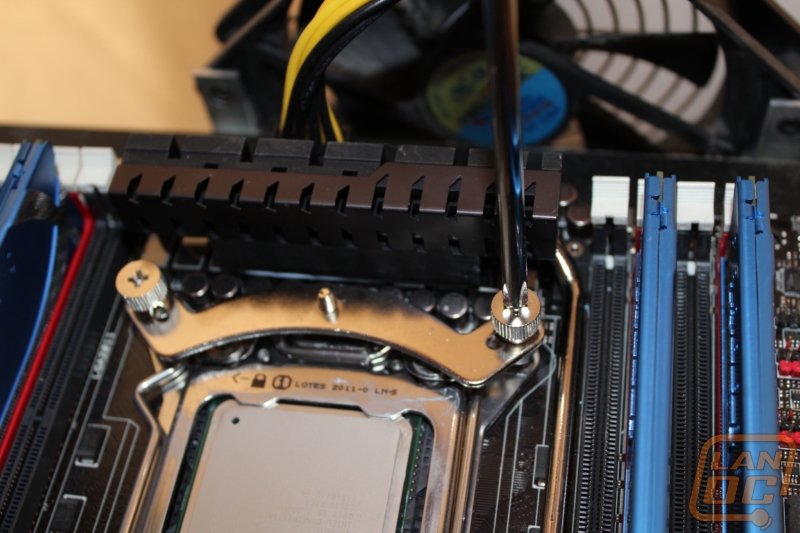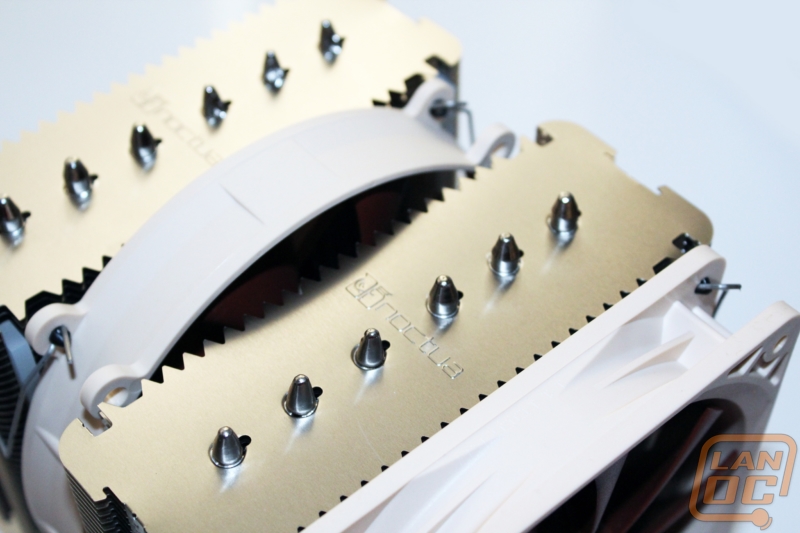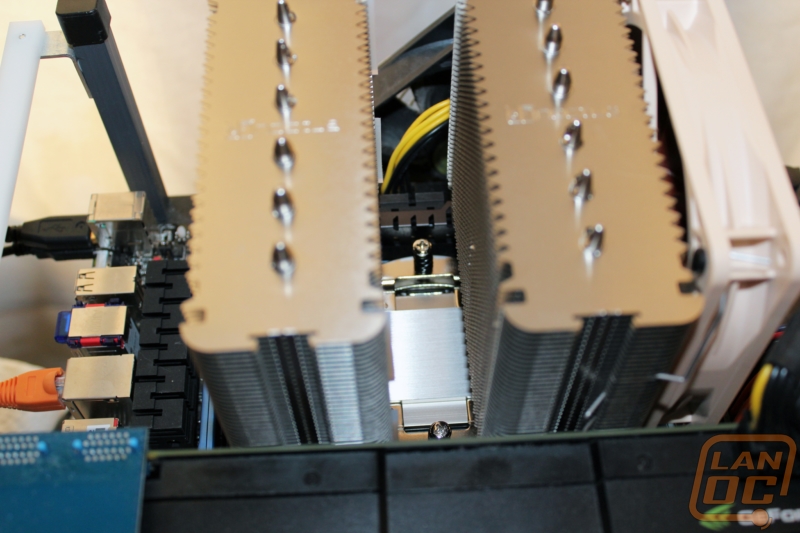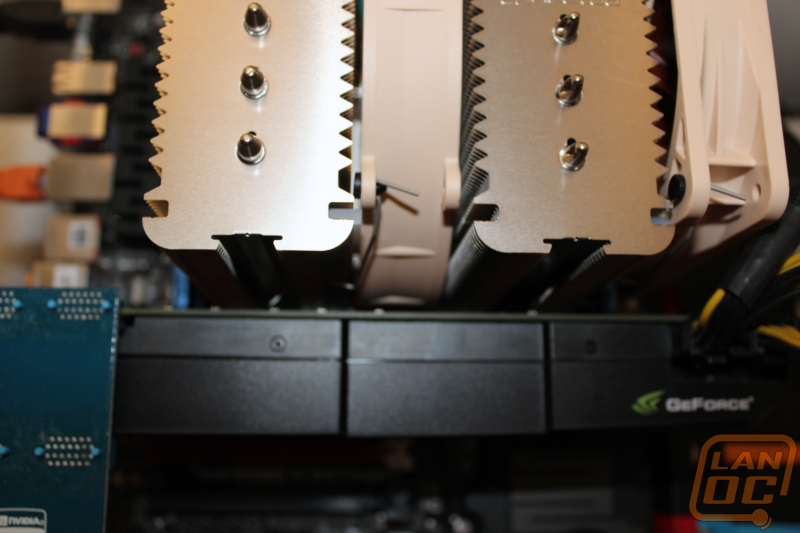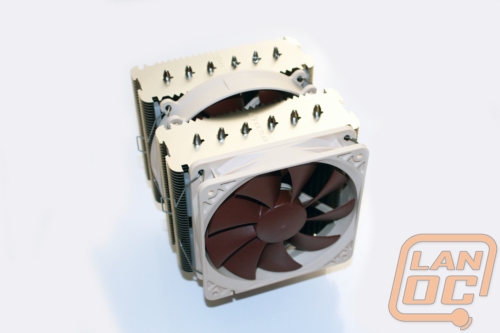
Product Name: Noctua NH-D14 SE2011
Review Sample Provided by: Noctua
Review by: Wes
Pictures by: Wes
Specifications
|
Heatsink Specifications |
|
|
Socket compatibility |
Intel LGA2011 |
|
Height (without fan) |
160 mm |
|
Width (without fan) |
140 mm |
|
Depth (without fan) |
130 mm |
|
Height (with fan) |
160 mm |
|
Width (with fan) |
140 mm |
|
Depth (with fan) |
158 mm |
|
Weight (without fan) |
900 g |
|
Material |
Copper (base and heat-pipes), aluminium (cooling fins), soldered joints & nickel plating |
|
Fan compatibility |
140x140x25 & 120x120x25mm |
|
Scope of Delivery |
1x NF-P14 PWM premium fan 1x NF-P12 PWM premium fan 2x Low-Noise Adaptor (L.N.A.) Y-Split Cable 4x Vibration-Compensators (for using NF-P12 as case fan) 4x Fan screws (for using NF-P12 as case fan) NT-H1 high-grade thermal compound SecuFirm2™ Mounting Kit for LGA2011 Noctua Metal Case-Badge |
|
Warranty |
6 Years |
|
Fan specifications |
|
|
Model |
Noctua NF-P14 PWM & Noctua NF-P12 PWM |
|
Bearing |
|
|
Max. Rotational Speed (+/- 10%) |
1200 / 1300 RPM |
|
Max. Rotational Speed with L.N.A. (+/- 10%) |
900 / 900 RPM |
|
Min. Rotational Speed (PWM) |
300 / 300 RPM |
|
Max. Airflow |
110,3 / 92,3 m³/h |
|
Max. Airflow with L.N.A. |
83,7 / 63,4 m³/h |
|
Max. Acoustical Noise |
19,6 / 19,8 dB(A) |
|
Max. Acoustical Noise with L.N.A. |
13,2 / 12,6 dB(A) |
|
Input Power |
0,96 / 0,6 W |
|
Voltage Range |
12 V |
|
MTBF |
> 150.000 h |
Packaging
Noctua packed the special edition in the same packaging that we saw before with only one real difference, the special edition for LGA2011 sticker. Inside you have three easy to pull out boxes, Noctua included small holes on the top of each to make sure you wouldn’t have any trouble pulling them out. One of the three boxes is empty and is just filler; the other two contain the heatsink and accessories.
This special edition only comes with brackets and instructions for LGA2011 CPU’s. Typically Noctua heatsinks come with AMD and Intel heatsinks but this model is right to the point. All of the other goodies are packed away in the common parts bag. Inside you have all of their Low-Noise Adaptor’s, case badge, Vibration-Compensators, and thermal compound.
Installation
One of the reasons we went with the NH-D14 for our new test bench was how simple Noctua heatsinks have been for us in the past. With the new socket brings an all new design, completely different than when Intel has done on any of their CPU’s.
Noctua’s new setup has three parts to it. You have four bolts with different threads on each side, two brackets, and four nuts. The bolts attach to your motherboard, the two brackets go on top of those, and then the four nuts hold the brackets down. Beyond that everything else is the same as their old designs. The bracket gives the heatsink two attachment points. The NH-D14 has both of those spring loaded bolts c clipped to the heatsink where they won’t go anywhere. Installing the heatsink from here requires removing the middle fan and using the screwdriver included with the heatsink to tighten everything down.
Our Test Rig
Intel i7-3960X
Asus Rampage IV X79 Motherboard
Kingston 1600Mhz DDR3 Quad Channel Ram
Kingston Hyper X 120
Seagate Constellation 2tb Hard drive
Intel Water Cooling
Cooler Master Gold Series 1200 Watt PSU
http://www.highspeedpc.com/ Test Bench
Performance
We already know the NH-D14 is a great performing heatsink, my question is how well does it perform up against the Intel water cooling. Right from the beginning I knew that this solution would be quieter than Intel’s Water cooling but I wasn’t sure about the actual cooling performance. While using RealTemp to register temperatures on every core we let each sit for an hour to get our idle temperatures then ran prime95 for an hour for our load temps. We averaged each of the 6 cores temperatures together for our final scores. All of the testing was done at 69 degrees Fahrenheit ambient temperatures. Our results were surprising!
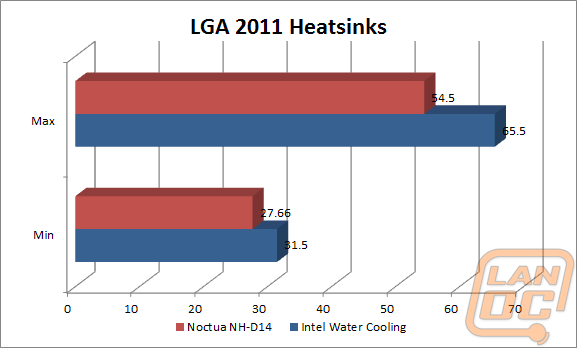
The NH-D14 out performed in both idle and load testing by a considerable amount, all while running at a much lower noise level. The Intel Water Cooling does a good job considering the heat that the i7-3960X puts out, but the Noctua blew it out of the water, no pun intended.
Although the performance was amazing there was one thing that was almost an issue after getting out test rig all together. The side of the NH-D14 is just out of this world. Because of that with everything back together the heatsink was very close to our top PCI Express slot on the Rampage IV. The two fan clips holding the pans on are just millimeters away from touching things on the back of our GTX 580’s. This is something that we may have to adjust in the future. A slight bump on the video card could leave us with a shorted out video card.
Overall and FV
I know we have covered the NH-D14 before, but it still always amazes me both because of its size and its performance. Even when put up against the good performance of the Intel Water Cooling the NH-D14 still managed to look impressive. I doubt that we find many heatsinks that match or beat its performance. With that you still have Noctua’s sound performance and quality. I’m not sure that you could ask for anything else. If you are running a board like our Rampage IV that has the PCI Express slot directly at the top you might still run into fitment issues as it does get very close to our video cards. But that’s not a typical setup. This is a perfect heatsink for the enthusiast focused LGA2011 socket CPU’s.
